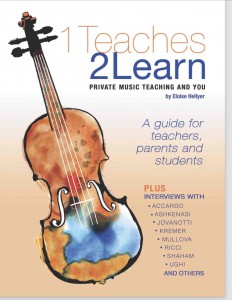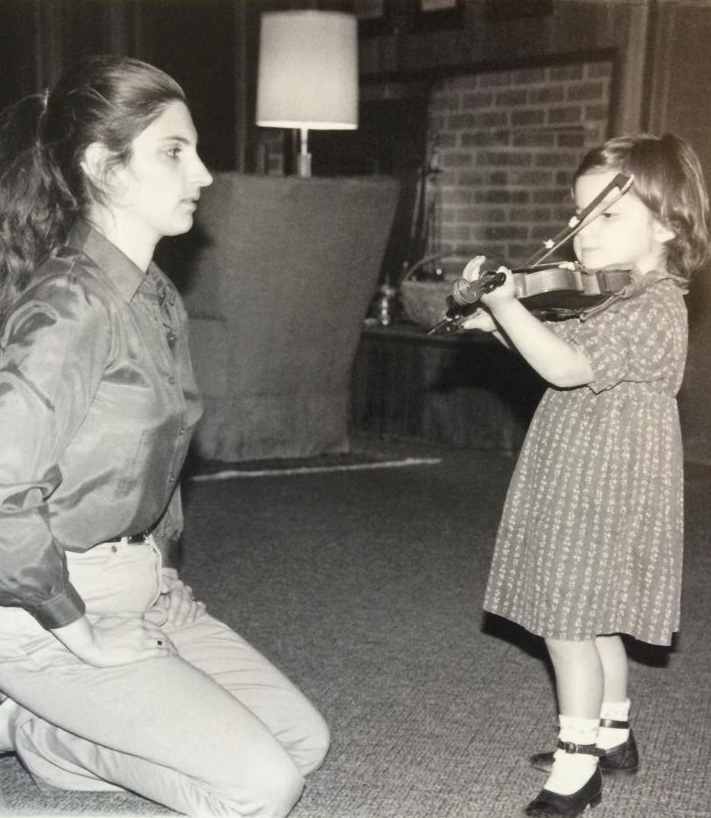Not Wanting to Be Wrong: What to Do About Your Frustrated Students
Question asked by a teacher: Any ideas on how to teach students who get frustrated and cry when they make a mistake? I have one who says that she gets upset because she doesn’t want to be wrong. Her mom says her teachers remarked on the same behavior in school, too.
What a great question! I’m sure we have all had to deal with students like this. I certainly have and here’s what I have learned over the years.
When students get into these states, they aren't worried about the mistake, they are worried about how they feel about the mistake: what it means about them. This is pure ego and, above all, a very bad habit. Why? The student is not thinking about what he's doing, he’s thinking about himself. Not much gets done this way.
Ask yourself and then your student to make sure he understands what’s going on;
- Did he fix the mistake?
- Did he try to figure out why he made it?
- Did he then practice it correctly and slowly?
- Or is he so caught up in his emotions that he does none of the above?
- Is it more important to do things well or just not to be “wrong”?
What can we do? Tell such students that it’s a great thing that they want to do well, whatever their reason may be, and so we are going to help them..
First of all, convince them that they are wasting a lot of time on being upset rather than fixing the problem. Use an example:
- Mother is cooking
- Mother accidentally sets fire to oil in the pan.
- Mother gets angry and starts to cry because she made a mistake, throws her spatula on the floor in frustration, and the whole house burns down.
Or, mother puts the fire out while it's still contained to the pan and starts dinner over.
Then inform them that best way to be a perfect player, or as close as possible to one, is to fix one’s mistakes with a minimum of fuss and energy. How?
When your student makes a mistake, make sure she
1. Acknowledges the mistake and that it doesn’t mean she is a terrible person. Have her notice that the earth did not open under her feet and engulf her. Nor did God strike her with a thunderbolt. She made a mistake: She can sit here and cry, which is a colossal waste of time, or she can do something about it so she won’t make that mistake again. Which is it going to be? And what's better—doing something right, or just not being wrong?
2. Analyzes why she made the mistake: I give my students various categories to consider for an out-of-tune note, for example:
a. Hand position (in my experience, most out-of-tune notes in beginners are caused by poor position)
b. Not hearing the note correctly in your head before you put the finger down.
c. Not analyzing the interval correctly (even small children know the difference between near and far).
d. An accident. This happens to all violinists, I tell my students, but to beginners only 0.0001% of the time, so take another look at the first three hypotheses..
3. Re-practices where she made the offending mistake, playing it three times in a row (or more, depending on the age and concentration span of the student) without making a mistake. That means she has to be present in the moment and really pay attention to what she’s doing, not how she feels about it.
The whole idea is to take their attention away from their feelings and put it on what they are doing. And you can point this out to them by saying:
“I hear that you’re frustrated. Good! If you get angry or frustrated about a mistake, you are more likely to correct it. It’s the ones who don’t care who never get better. So you feel lots of energy right now, don’t you? How are we going to use that energy? You can cry and be angry with yourself, or you can direct your energy and attention to the problem at hand. C’mon, what are the steps I gave you to take when you make a mistake?”
Helping our students deal with their emotions is part of the job—after all, don't we have to teach them to use them productively to interpret a piece? As they can’t let their emotions take over while performing, it shouldn’t happen while practicing either (how you practice is how you play!). The trick is to use your them, not be used by them. So take that anger and frustration and put it to good use. I always say that the real first step in correcting a mistake is to be offended by it, as this this summons up the energy to deal with it. Not offended personally, but: “What's this??? How could this happen?? Let’s see what went wrong!”
So let’s say that you have set up this protocol, everyone has agreed on it, and it seems to go pretty well most of the time. What do you do when you see your students go into that downward spiral of self-flagellation for some mistake they see as yet another confirmation of their wrongness? Remember that this is just a bad habit reasserting itself and ask them the following question that I used with one early adolescent student:
"Are you thinking about what you’re doing or about yourself? Because if you’re thinking about yourself, I will have to stop the lesson, as there isn’t much I can do for you. Why? Because you aren’t going to be able to correct that mistake or learn anything from it, and you will continue to be wrong, which you don’t like very much.”
It worked like a charm. He snapped right out of what was promising to be an epic snit.
After all, the only way to avoid being wrong is to practice right. And that means paying attention not only to what you do with your hands, but practicing how to use your energy and emotions. This is a valuable lesson for all students, especially for those with an abundance of these two elements.
It all boils down to helping our students direct their emotional energy in a way that's going to be of use them in everything they do in life—and live well, too. We can teach them to understand that what they do about a problem is going to get them a lot farther than wasting time and energy caught up in how they feel about it and themselves, and we can give them a procedure that they can use to restore their equilibrium. It all starts with asking themselves one little question every time they feel they're going off the rails;
What's more important—being right or getting it right?
Share this:
Buy it on www.sharmusic.com - eBook format, avaliable worldwide, paperback in North America
COPYRIGHT
ABOUT
A music teacher’s thoughts and observations on the teaching and the study of a musical instrument, hoping to be of help to parents, students and teachers.
PHOTO
AWARDED TOP 25 VIOLIN BLOG
CATEGORIES
TAGS
ARCHIVES
-
Agosto 2022
Agosto 2023
Agosto 2024
April 2015
April 2016
April 2017
April 2019
April 2020
Aprile 2022
Aprile 2023
Aprile 2024
August 2014
August 2015
August 2016
August 2017
August 2018
August 2019
August 2021
December 2014
December 2015
December 2016
December 2017
December 2018
December 2019
December 2020
Dicembre 2022
Dicembre 2023
Dicembre 2024
Febbraio 2022
Febbraio 2023
Febbraio 2024
February 2015
February 2016
February 2018
February 2019
February 2020
February 2021
Gennaio 2022
Gennaio 2023
Gennaio 2024
Giugno 2022
Giugno 2022
Giugno 2023
Giugno 2024
January 2015
January 2016
January 2017
January 2018
January 2019
January 2020
July 2015
July 2017
July 2019
June 2016
June 2017
June 2018
June 2019
June 2020
June 2021
Luglio 2022
Luglio 2023
Luglio 2024
Maggio 2022
Maggio 2023
Maggio 2024
March 2015
March 2016
March 2017
March 2018
March 2019
March 2020
March 2021
Marzo 2022
Marzo 2023
Marzo 2024
May 2015
May 2016
May 2018
May 2019
May 2020
November 2014
November 2015
November 2016
November 2017
November 2018
November 2019
November 2021
Novembre 2022
Novembre 2023
Novembre 2024
October 2014
October 2015
October 2017
October 2018
October 2019
October 2020
October 2021
Ottobre 2022
Ottobre 2023
Ottobre 2024
September 2014
September 2015
September 2016
September 2018
September 2019
September 2020
September 2021
Settembre 2022
Settembre 2023
Settembre 2024
RECENT POSTS
Terry G and Me, or Terry Gilliam on Where (or What) Practicing the Piano Will Get You…
The Teaching We Don’t Do Is More Important Than We Think
Overwhelmingness or What Teaching and Motherhood* Have in Common
Cellphone Serenity
How to Build Your Reputation – the Kind You Want
Desperate Times, Desperate Measures. Or How to Deal With Your Strong-Willed Stubborn Student and Survive
“Why Does My Teacher Get So Frustrated?” Letter to a Perplexed Student
Mount Rush-no-more….And How to Get There
Realizzato con VelociBuilder - Another Project By: Marketing:Start! - Privacy Policy




